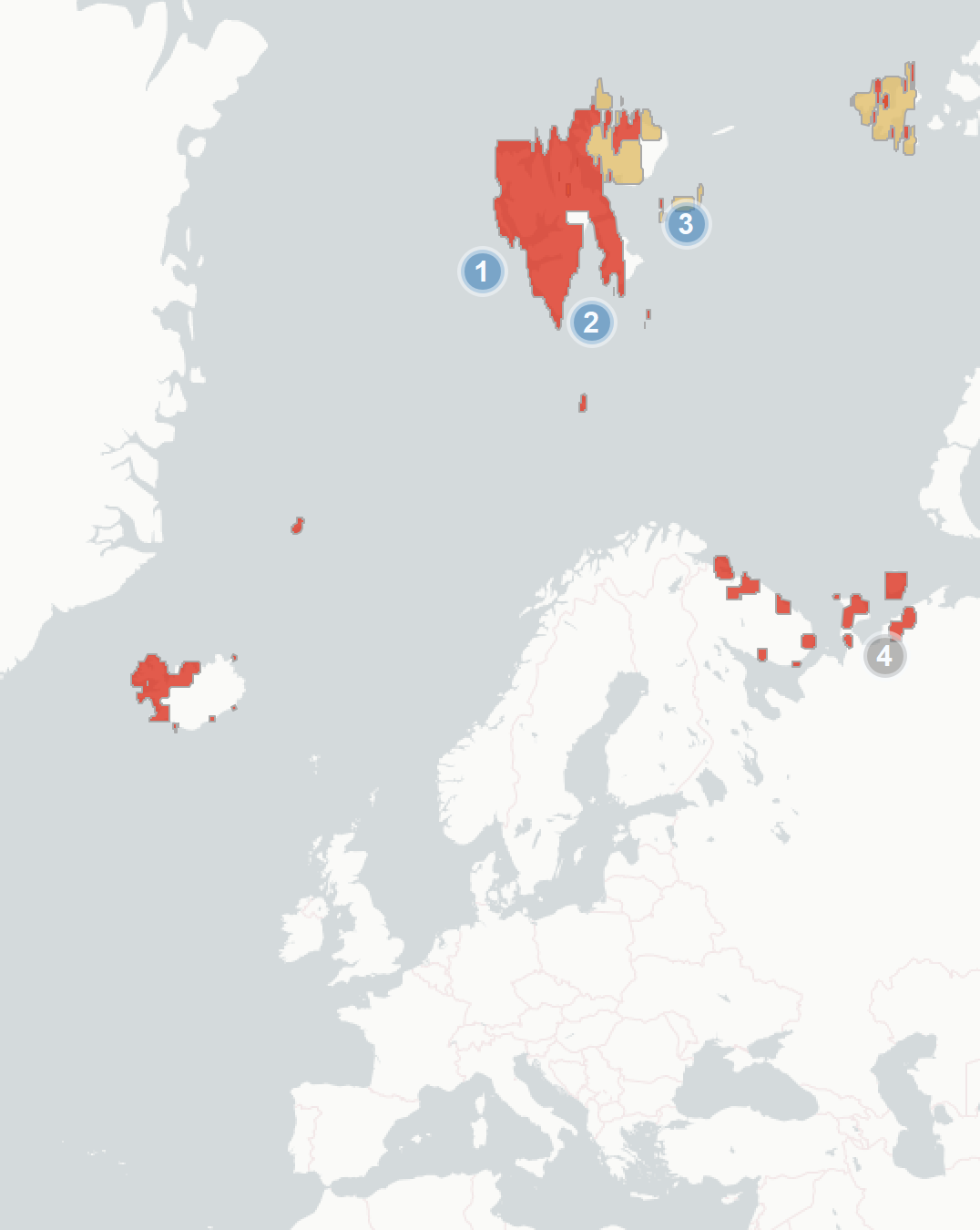Glaucous Gull (Larus hyperboreus): vulnerability to climate change
Evidence for exposure
Potential changes in breeding habitat suitability:
-
Current breeding area that is likely to become less suitable (77% of current range)
-
Current breeding area that is likely to remain suitable (23%)
-
Current breeding area that is likely to become more suitable (0%)
Current impacts to Glaucous Gulls attributed to climate change:
-
Negative Impact: There has been increased predation by polar bears, most likely due to reduction in sea ice and therefore a lack of alternative prey.
-
Negative Impact: Climate change is likely contributing to higher concentrations of contaminents ingested by glaucous gulls.The overall effect on the population is unknown, but presumably negative.
-
Negative Impact: Climate change has contributed to a range shift in several helminth parasites, which has led to glaucous gulls being exposed to novel parasites, as well as increased parasite load. Effect on population is unknown, but presumably negative.
Predicted changes in key prey species:
-
Key prey species are likely to decline in abundance along the Kanin Peninsula and southern Barents Sea
Climate change impacts outside of Europe
-
Glaucous gull colonies display higher rates of cannabalism and lower breeding success in response to higher sea temperatures. This is presumably due to lack of marine prey, and is likely to be excerabated with further climate change.
Sensitivity
-
Chicks are susceptible to weather-related mortality, especially if severe wet weather occurs during hatching and first week post-hatch. Changes, or an increase, in precipitation during key breeding periods may have large impacts on chick survival.
-
Avian flu has been recently recorded in some populations of Glaucous gulls, warmer weather in the future may contribute to outbreaks.
-
Competing species, such as herring gulls, are shifting their ranges north, in part in relation to climate change. This may lead to competition in the future if ranges overlap.
Adaptive capacity
-
Very diverse diet, consisting of fish, marine invertebrates, bird eggs and young, small birds and mammals, carrion, refuse at garbage sites, seaweed, berries. Loss of one prey species is unlikely to have a major impact on most populations
